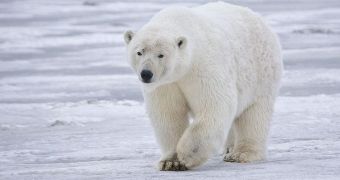According to the conclusions of a new scientific study, it would appear that the modern polar bear appeared as the result of a complex interplay between genetic and environmental factors. In other words, the species was produced by brown bear mating patterns, coupled with ancient bouts of climate change.
The conclusion belongs to a study of polar bear genomes, which researchers sequenced so that they could track back the species' history. The work was carried out by an international collaboration of experts, led by scientists at the Pennsylvania State University and the University at Buffalo.
What the team found was that key climatic events that occurred over the past million years influenced the average size of the polar bear directly. These animals tend to become more massive as temperatures shrink, and decrease in size during warmer periods.
The same genetic analysis revealed that the polar bear became a distinct species between 4 and 5 million years ago. Even so, specimens continued to interbreed with brown bears at lower latitudes until much more recently than originally established.
It is possible that the two species were allowed to interact more commonly during warm periods, when glaciers retreated, allowing direct passage between various areas of the Arctic. Basically, the ranges of the two animals were allowed to overlap.
“Maybe we're seeing a hint that in really warm times, polar bears changed their life style and came into contact, and indeed interbred, with brown bears,” says Penn State professor of biochemistry and molecular biology Stephan Schuster, also the co-lead author of the new study.
He also holds an appointment as a research scientist at the Nanyang Technological University in Singapore. The senior author of the work was UB assistant professor of biology Charlotte Lindqvist.
Details of the investigation were published in the July 23 early online issue of the esteemed journal Proceedings of the National Academy of Sciences (PNAS). According to the team, this is the most comprehensive analysis of the polar bear DNA ever conducted.
“We generated a first-rate set of data, including deep sequence coverage for the entire genomes of a polar bear, three brown bears and a black bear, plus lower coverage of 23 additional polar bears, including a 120,000-year-old individual; very few vertebrate species have such comprehensive genomic resources available,” Schuster concludes.

 14 DAY TRIAL //
14 DAY TRIAL //